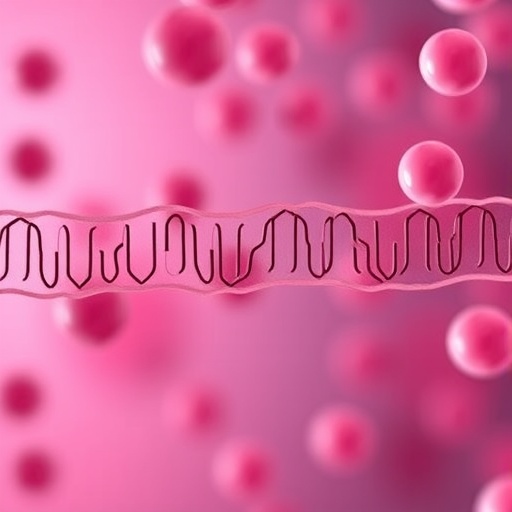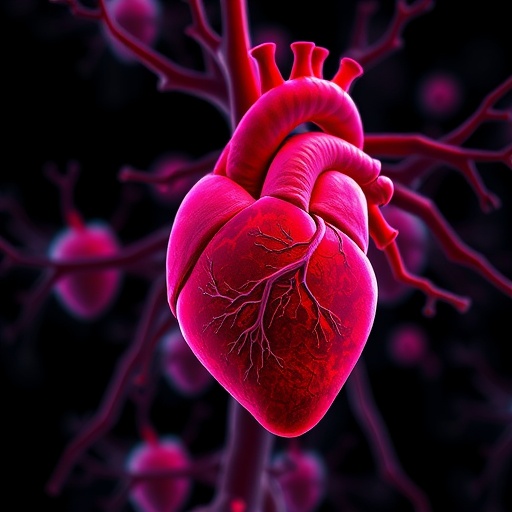
In a groundbreaking study published in BMC Pediatrics, a collaborative research team led by Wu, Y., Huang, J., and Zou, Y., has unearthed crucial insights into the metabolomic changes that occur in children undergoing surgical repair for Ventricular Septal Defect (VSD). This research emphasizes the significance of metabolic profiling as a lens through which the physiological and biochemical shifts in pediatric patients post-surgery can be analyzed. This revelation sheds light on the multifaceted nature of recovery from heart surgery in children, where traditional clinical indicators may not provide the full picture.
Ventricular Septal Defect is one of the most common congenital heart defects, resulting in the abnormal flow of blood between the heart’s chambers. Most children with VSD undergo surgical intervention during their early years to correct the anomalies and improve their long-term health outcomes. However, the aftermath of such operations can bring about significant physiological alterations that are not immediately apparent through standard clinical assessments. This research retrospectively examines the intricate relationship between surgery and metabolic shifts, presenting an invaluable addition to pediatric cardiac care.
The study drew upon a robust sample of pediatric patients, closely monitoring their metabolomic responses pre- and post-VSD repair surgery. Utilizing cutting-edge technologies such as liquid chromatography-mass spectrometry (LC-MS), the researchers were able to illuminate the metabolic signatures unique to this patient population. LC-MS is a powerful tool for analyzing complex biological samples, and in the context of VSD repair, it has enabled researchers to identify specific metabolites that are either upregulated or downregulated following surgical interventions.
Among the metabolic changes observed post-surgery, the researchers identified fluctuations in lipid metabolism as particularly noteworthy. Certain lipid species exhibited significant reductions, which corresponded with improvements in cardiac output and overall metabolic health. This finding underscores the metabolic consequences of VSD repair and raises questions about the long-term implications for pediatric patients. If lipid profiles continue to shift during recovery, it could pave the way for novel interventions aimed at optimizing recovery.
Moreover, the study’s findings reveal that certain amino acids and their derivatives were markedly altered after surgery. Amino acid metabolism is essential for cellular repair and regeneration, particularly in the context of recovery from cardiac surgery. The correlation between amino acid levels and postoperative recovery presents an exciting avenue for additional research and therapeutic exploration. Understanding how these metabolites influence healing could lead to more tailored postoperative care strategies and improved outcomes for these children.
In addition to the biochemical changes, the researchers also explored the psychological and physiological aspects of recovery in children undergoing VSD repair. Although the study primarily focused on metabolic changes, integrating psychological assessments could enhance the comprehensive understanding of postoperative recovery. Children often grapple with anxiety and fear related to surgery, which can impede their recovery process. A holistic approach that includes psychological support alongside metabolic monitoring may yield better health outcomes.
Furthermore, this study places a spotlight on the importance of personalized medicine in pediatric cardiology. The unique metabolic profiles of individual patients could help determine the best course of care post-surgery. By identifying how children with VSD respond metabolically to surgical interventions, healthcare providers can develop individualized rehabilitation plans that may lead to better recovery trajectories and healthier long-term outcomes.
While the results of this study are promising, it is essential to recognize that further research is necessary. Future studies should focus on larger populations and a more diverse set of metabolic variables to build upon these findings. A longitudinal approach could yield insight into the long-term metabolic changes following VSD repair, providing a comprehensive understanding of the ongoing effects of surgery on a child’s health.
Additionally, as the study progresses, questions arise about how environmental factors and lifestyle choices may further influence metabolic outcomes. Searching for potential links between nutrition, physical activity, and metabolic health in children post-surgery will enhance the understanding of holistic recovery. This integrative perspective could inspire preventative strategies that bolster health during early childhood, reducing the risk of complications later in life.
In discussing the implications of these findings, it is crucial to highlight the impact of education and awareness among healthcare providers, families, and caregivers. Effective communication about postoperative metabolic changes can empower families to make informed decisions about nutrition and lifestyle interventions during the recovery phase. As these advancements unfold, fostering a collaborative environment among healthcare providers, families, and researchers will be essential to improve outcomes for children undergoing surgeries like VSD repair.
The significance of this research extends beyond immediate clinical applications; it illustrates a shift in how we view pediatric heart care. By recognizing the interplay between surgery and metabolic health, healthcare professionals can adopt a more nuanced approach to treatment, ensuring that the complexities of a child’s recovery are properly managed. This shift represents a paradigm change in pediatric cardiac care, emphasizing that understanding the underlying biochemistry may be just as critical as the surgical procedure itself.
As this field of research continues to evolve, there is immense potential for translating these scientific findings into clinical practice. As access to metabolomic analysis becomes more widespread, new protocols could emerge that routinely monitor metabolic health in pediatric patients pre- and post-surgery. This proactive approach could revolutionize how VSD and similar congenital defects are treated, making strides towards better health outcomes for generations to come.
In conclusion, the work of Wu, Y., Huang, J., and Zou, Y., in unveiling the hidden impacts of metabolic changes in children undergoing VSD repair contributes significantly to the understanding of pediatric cardiology. Not only does it provide essential insights into the recovery process, but it also lays a foundation for future research that could ultimately improve the quality of life for children affected by congenital heart defects. The interplay between surgery and metabolomics highlights the necessity for a comprehensive understanding of pediatric health, prioritizing the well-being of children in their journey to recovery.
Subject of Research: Metabolomic changes in children undergoing VSD repair
Article Title: Unveiling the hidden impact: metabolomic changes in children undergoing VSD repair
Article References: Wu, Y., Huang, J., Zou, Y. et al. Unveiling the hidden impact: metabolomic changes in children undergoing VSD repair. BMC Pediatr 25, 664 (2025). https://doi.org/10.1186/s12887-025-06083-9
Image Credits: AI Generated
DOI: 10.1186/s12887-025-06083-9
Keywords: Metabolomics, VSD repair, pediatric cardiology, amino acids, lipid metabolism, personalized medicine, recovery, surgery, congenital heart defects, holistic care.
Tags: biochemical shifts after heart surgeryinnovative technologies in metabolomic researchlong-term health outcomes post-VSD repairmetabolomic analysis in congenital heart defectsmetabolomic profiling in pediatric patientspediatric cardiac care advancementspediatric heart surgery recovery insightspost-surgery metabolic changes in childrenretrospective study on VSD surgery effectssignificance of metabolic shifts in childrentraditional clinical indicators vs. metabolic profilingVentricular Septal Defect surgical outcomes




